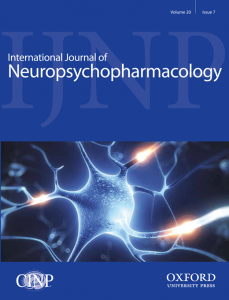 A psychiatry journal has retracted a 2011 paper exploring the use of ketamine to treat patients with severe depression following an investigation at Yale University.
A psychiatry journal has retracted a 2011 paper exploring the use of ketamine to treat patients with severe depression following an investigation at Yale University.
According to the retraction notice, Yale determined that the paper, published in the International Journal of Neuropsychopharmacology, did not accurately describe the research. But the study’s lead author, Gregory Larkin, says he believes the retraction “is wholly unnecessary, serving neither patients nor science.”
Over the past few decades, a growing body of research has suggested that the drug, which is typically used as an anesthetic, may also be an effective treatment for depression. And physicians have been increasingly prescribing the drug off-label to treat the condition.
But many experts remain cautious about using ketamine as an antidepressant, given the lack of long-term data on the drug’s safety and effectiveness.
The 2011 International Journal of Neuropsychopharmacology paper assessed the efficacy of rapidly injecting the drug into the vein in patients with severe depression. The study found that all “14 patients attained remission within 1 week of the treatment, and most met response criteria 10 days after treatment” with minimal side effects.
But, according to the retraction notice, the paper misrepresented the drug doses patients received and the doses described in the protocol.
Here’s the retraction notice for “A preliminary naturalistic study of low-dose ketamine for depression and suicide ideation in the emergency department:”
This article has been retracted because Yale University conducted an investigation that determined that the description of the research was not accurate. The article misrepresents both the protocol-specified doses and the actual delivered doses of ketamine.
The paper has been cited 126 times, including once by the retraction notice, according to Clarivate Analytics’ Web of Science.
Larkin was based at Yale at the time of the study. According to his LinkedIn profile, he is now chair of emergency medicine at University of Auckland in New Zealand.
We requested a copy of the investigation report from Yale and from Larkin. Linda Mayes, special advisor to the dean at Yale School of Medicine, told us:
This is a confidential matter and we cannot release information regarding the investigation process.
The editor-in-chief of the journal told us:
…we have no specific information about the investigation at Yale that led to the retraction. That investigation was carried out entirely at Yale and they informed us of the result and requested the retraction.
We are not certain if the journal notified Larkin about the retraction. When we contacted Larkin, he told us “I was unaware of this development.” The journal says the retraction was all Yale’s doing:
…this was ENTIRELY a Yale matter and any and all questions need to be directed to them.
Larkin acknowledged that the paper does not include the dose range:
The abstract certainly could (and perhaps should) have included this range of dosing to be more consistent with the results reported.
Replacing “0.20″ with “0.18-0.28” in the abstract might have solved this.
Larkin also explained why his study was important:
This study, however modest, represents the first attempt to treat acutely suicidal patients with low-dose ketamine in a busy emergency department setting. It was an important first step.
He added:
Our model of ultra-low dose acute ED treatment could one day be the safety bridge needed to more rapidly return a patient to their community for ongoing care and support. In this day and age of inpatient psych bed shortages, one would imagine that safe, effective, rapid-acting anti-depressants are a very good thing.
Results could not be replicated
But Colleen Loo, who studies the use of ketamine in depression says her team was unable to replicate Larkin’s results. Loo, a professor of psychiatry at the University of New South Wales in Sydney, Australia, explained that she was interested in Larkin’s 2011 study because the authors “gave ketamine by a different method to other depression studies, and reported excellent results.” But when Loo and colleagues used the same method described in Larkin’s paper, they found:
1) the rapid injection method was poorly tolerated and we had to slow down the injection. They described giving ketamine over 1-2 minutes, we had to slow down the injection to being given over 5 mins, and even then there were a lot of side effects; 2) the results were not better than other ways of giving ketamine.
Loo reported the results in a 2014 paper, “Pilot dose – response trial of i.v. ketamine in treatment-resistant depression,” which has been cited 17 times, and similar findings in a follow-up 2016 study in Acta Psychiatrica Scandinavica, “Placebo-controlled pilot trial testing dose titration and intravenous, intramuscular and subcutaneous routes for ketamine in depression.”
Loo added:
it is important that the retraction clarifies that ketamine was not actually given as described in the paper, so that the field is not misled.
According to Loo, administering ketamine into the vein
would have resulted in a high peak level of ketamine in the blood, raising the possibility that this was an important factor in the good response.
Loo added that unlike in other studies, most people in Larkin’s study stayed well over a 10-day follow up, rather than relapsing within a week,” which “suggested that their method of giving ketamine was more effective.”
Like Retraction Watch? Consider making a tax-deductible contribution to support our growth. You can also follow us on Twitter, like us on Facebook, add us to your RSS reader, sign up on our homepage for an email every time there’s a new post, or subscribe to our daily digest. Click here to review our Comments Policy. For a sneak peek at what we’re working on, click here.